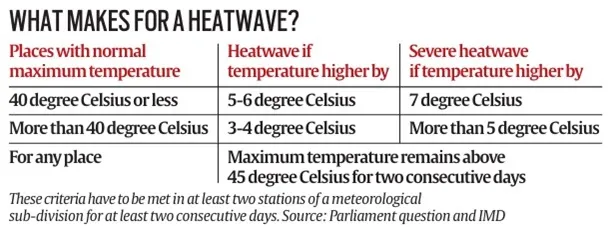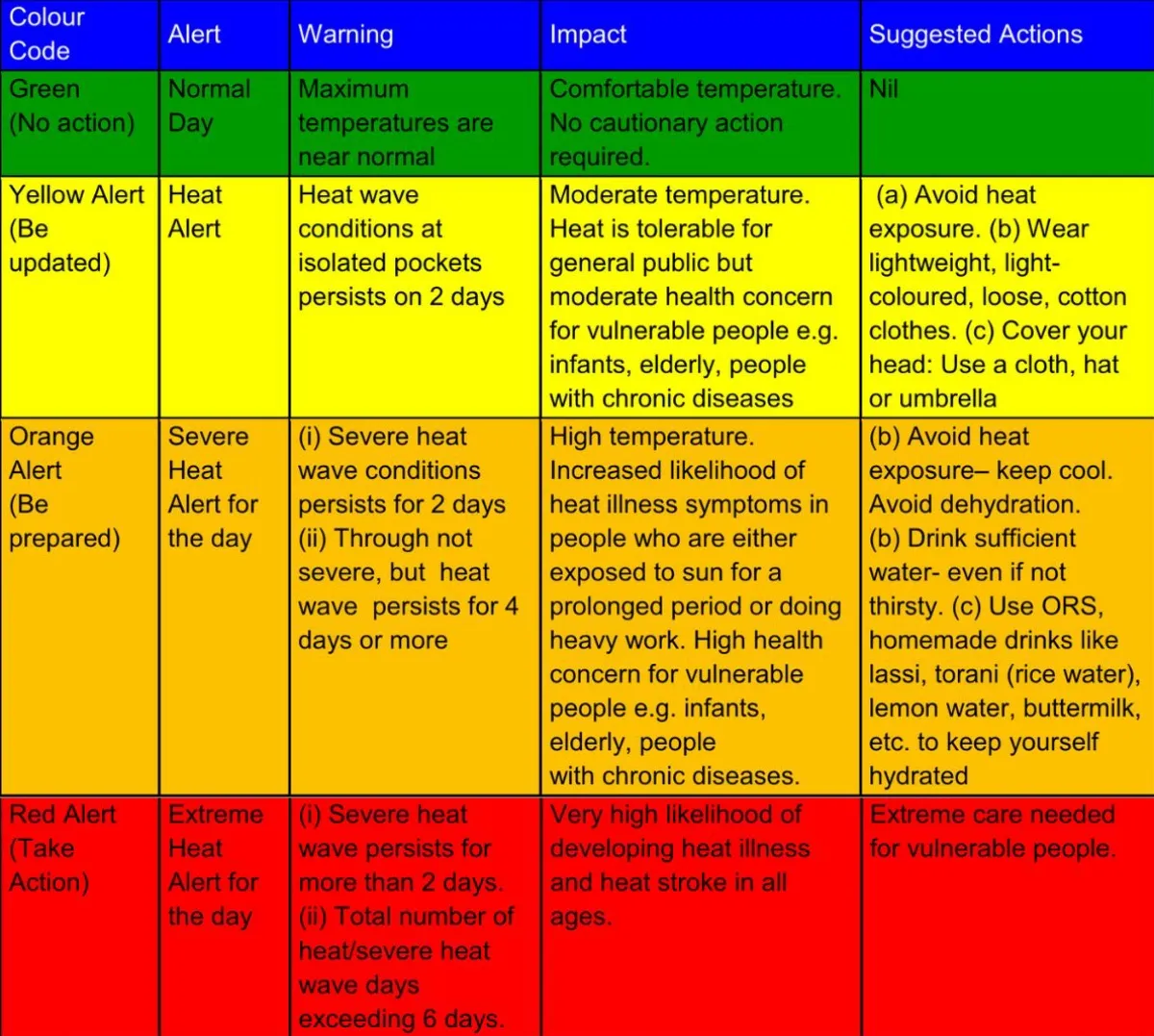Description

Copyright infringement not intended
Picture Courtesy: https://indianexpress.com/article/explained/everyday-explainers/imd-heatwave-red-alert-meaning-9338749/
Context: Delhi, Punjab, and other parts of North India have experienced temperatures around and over 44°C, causing a heatwave red alert.
What is a Heatwave?
- A heatwave is characterised by a condition of air temperature that poses a significant risk to human health when exposed. It's not merely about high temperatures but about the potential harm it can cause to individuals.
- Heatwaves are determined based on the deviation of current temperatures from the usual or normal temperatures observed in a specific region. This allows meteorological departments to establish thresholds for defining heatwaves, considering regional climatic conditions.
|
Heatwaves affect various parts of India, including Punjab, Haryana, Delhi, Uttar Pradesh, Bihar, and others. Certain regions, like Rajasthan and Vidarbha, experience extreme temperatures above 45°C during peak months like May.
|
Criteria for Heatwave Alerts
- Heatwave: When the maximum temperature reaches a certain threshold, such as 40°C for plains, 30°C for hilly regions, or a departure of 37°C or more for coastal areas from their usual temperatures.
- Severe Heatwave: This occurs when the temperature rises significantly above normal levels, usually more than 4.5°C to 6.4°C.

|
May is identified as the peak month for heatwaves in India. During this period, temperatures soar to their highest levels, intensifying the impact of heatwaves across various regions of the country.
|
Heatwave Red Alerts
- A red alert is the most severe heatwave warning issued by meteorological authorities. It signifies an extreme heatwave scenario where severe heatwave conditions persist for an extended period, typically exceeding two days or resulting in more than six consecutive days of heat or severe heatwave conditions.
- Red alerts indicate a heightened risk of heat-related illnesses and heatstroke, affecting individuals of all ages, especially vulnerable populations such as the elderly, infants, and those with chronic health conditions.
- The issuance of red alerts highlights the urgent need for individuals and communities to take proactive measures to mitigate the adverse effects of extreme heat and safeguard public health.

Precautions for Heatwaves
- Avoiding Sun Exposure: Individuals are advised to avoid direct sun exposure, particularly during peak hours when temperatures are highest, typically between noon and 3 pm.
- Protective Measures: Wearing protective gear such as hats or umbrellas can help minimise heat absorption and reduce the risk of heat-related illnesses.
- Hydration: Staying hydrated by drinking water frequently, even if not thirsty, is essential to prevent dehydration and maintain optimal body temperature.
- Opting for lightweight, light-coloured, loose-fitting, and breathable cotton clothing can aid in heat dissipation and enhance comfort during periods of high temperatures.
- Avoiding alcohol, tea, coffee, and carbonated soft drinks, which can contribute to dehydration, and opting for hydrating beverages like ORS, homemade drinks, and buttermilk is recommended.
Must Read Articles:
INDIA’S HEAT ACTION PLANS
HEATWAVES
Source:
INDIAN EXPRESS
|
PRACTICE QUESTION
Q. Analyze the potential impacts of climate change on the frequency, intensity, and duration of heatwaves in different regions of the world. How might changing atmospheric conditions, such as rising global temperatures and altered precipitation patterns, influence heatwave characteristics in the future?
|


















